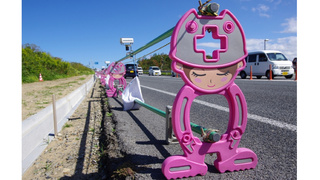Rural speed limits are officially 40km or 60km per hour, while highways and expressways are 70km or 80km. But the vast majority of Japanese drivers don’t adhere to these speed limits since they are ridiculously low. Most drivers follow the “practical/real world speed limit”, which is on average up to 30km/hour over the official speed limit. For many, speeding is a way of life. However, in the eyes of the police, speed cameras, and insurance companies, the official speed limits are the only speed limits, and if you get caught, be ready to pay up. Having said this, the police seem to generally permit a variance of 10km – 20km over the speed limit, though they will be a lot less lenient if you are in an accident. Obviously, keeping to the official speed limit is the safest option all round.
If you are caught speeding, you can expect a fine and a number of traffic violation points to be added to your license. If you are in an accident you will also receive points. The points are on record for one year, and are then cleared. However, if you collect six or more within a year your license will be revoked for 30 days. Also, if you are caught at more than 30km over the prescribed limit, you will receive a heavy fine and your license may be revoked. Both of these events will have serious repercussions at your school and board of education. Remember teachers are supposed to be examples of good conduct. If you are caught speeding at 40km over the limit, you could face a criminal charge.
Most rules of the road are probably the same as in your home countries, but there are a few notable exceptions:
- Flashing Yellow light: This means Give Way. You should slow down, and then carry on through if traffic is clear. Many Japanese drivers speed through these like the lights are out, but be aware that occasional late night police checks will ticket you ¥70,000 if you run through a yellow without slowing down.
- Flashing Red light: This means Stop. You should come to a complete stop once. Many Japanese drivers treat this as a give way sign, but it is in fact a stop sign.
- Often signal lights that are green-yellow-red in the day time will change to flashing yellow or flashing red signals at night. This is good, because there are altogether too many signal lights in this country.
- There is no legal parking on the side of the road. If you are parked on the roadside, you can be ticketed, towed, or even arrested depending on where it was. Every piece of land in Japan is accounted for.
- Bicycles have virtually no rules, and will often ride upstream into on-coming traffic, at night and without lights. Please be ready for these daredevils.
Resources
Rules of the Road (Japan) (Source: US Military; not to be considered an official source)
Japanese Road Signs (Source: US Military)





